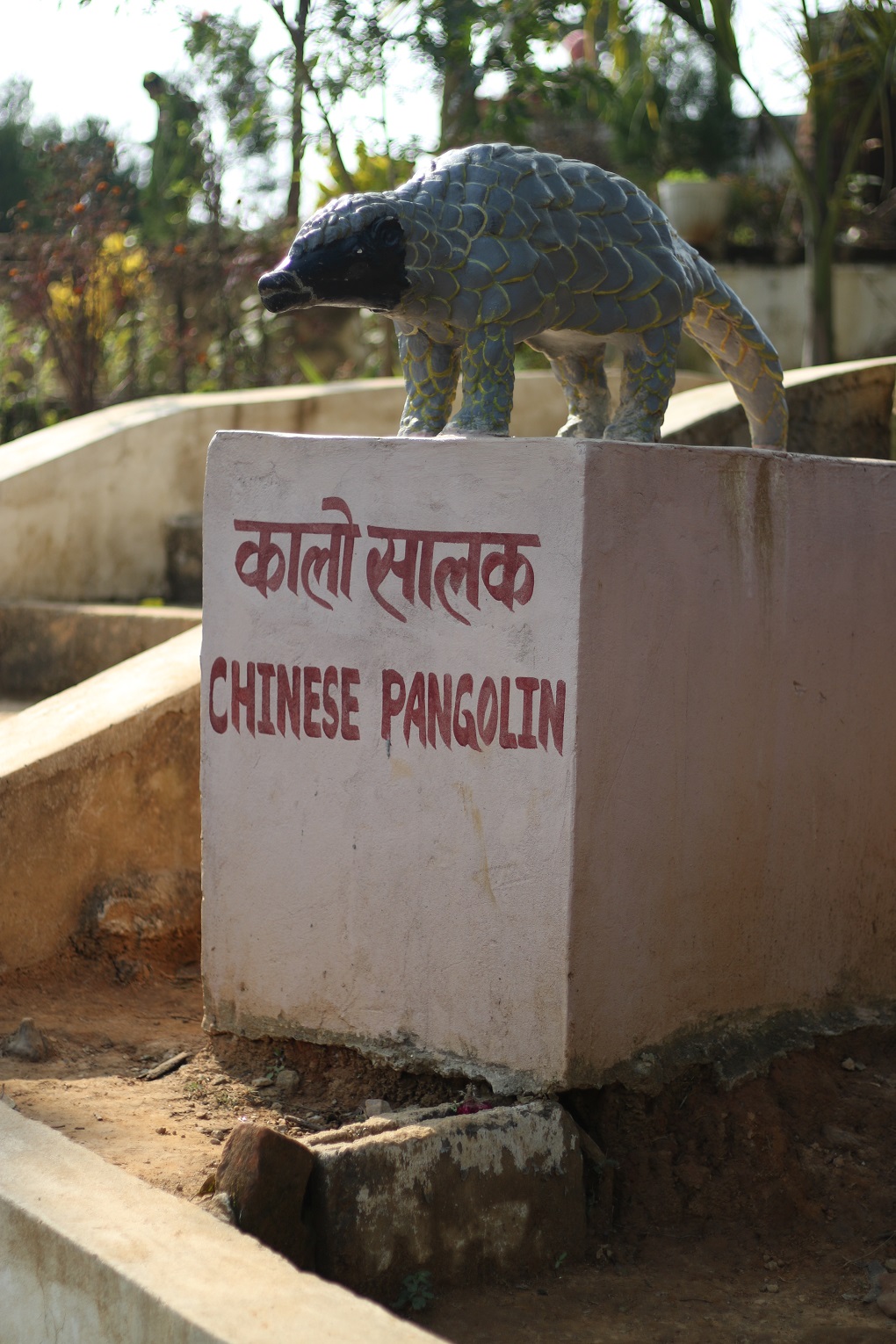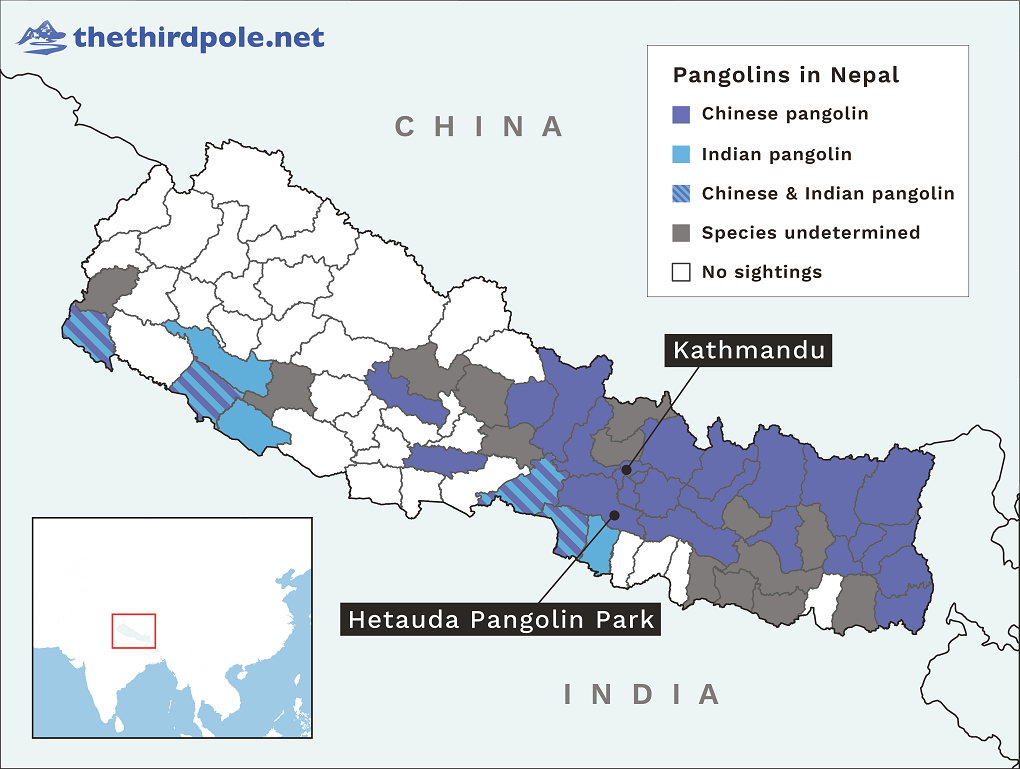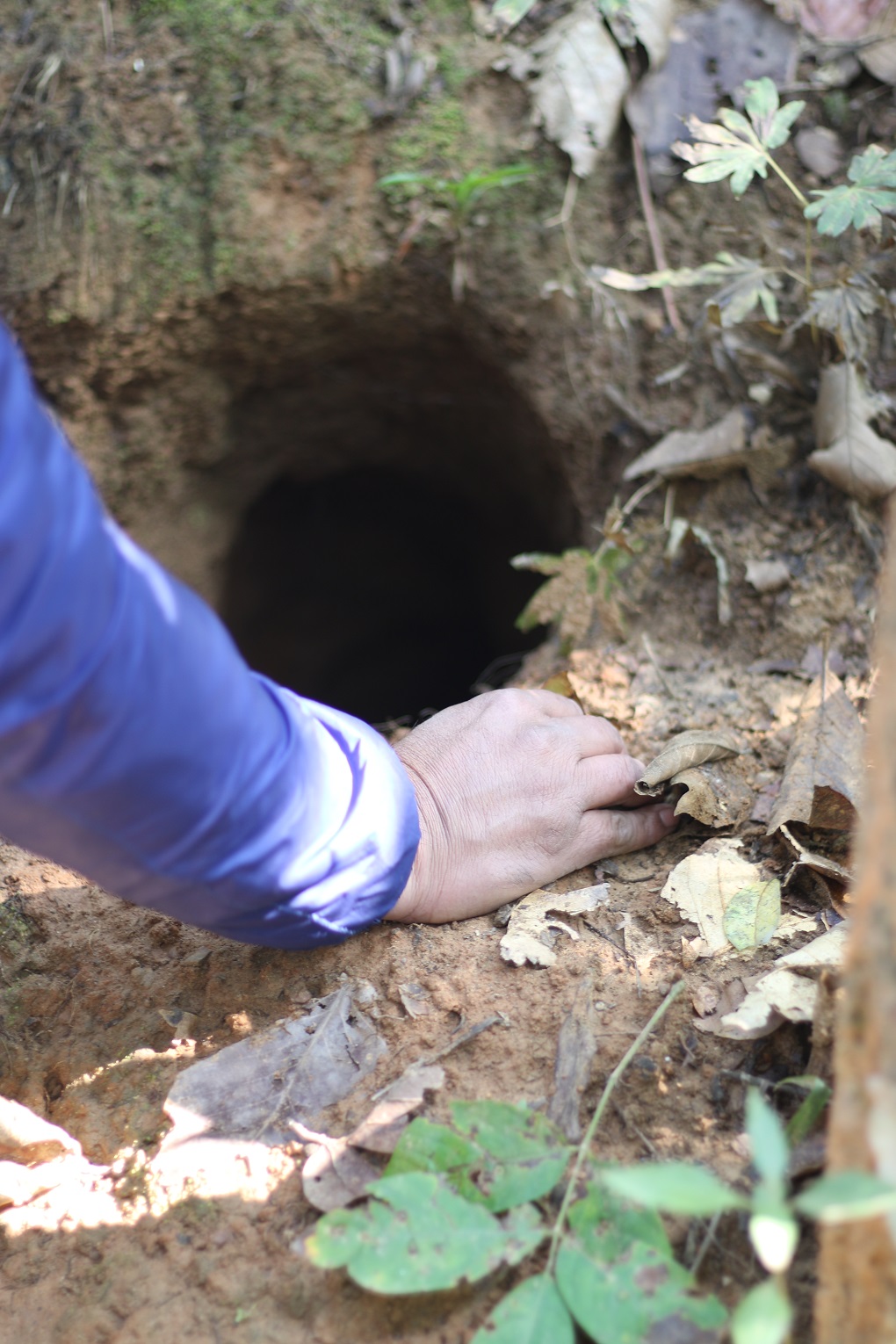When Bidya Sundar Shakya, the mayor of Nepal’s capital Kathmandu, visited the pangolin park in the neighbouring city of Hetauda recently, he had a question. “You told me this is a pangolin park, but where are the pangolins?”
Officials from the Chuchchekhola Community Forest Users’ Group — which manages the park — could not show him one.
Shakya is not the only visitor asking the question at the park, established two years ago as part of the ‘world’s first’ community-managed pangolin conservation area. The pangolin – the world’s most trafficked animal – is a shy creature that lives by eating ants, and is largely nocturnal. It is killed and trafficked mostly because its scales are used in traditional Chinese medicine.
“We were lucky that when the chief minister of the province was here, we could show him what a pangolin looks like,” said Arjun Dhakal, chairman of the forest user’s group.
“We need to have infrastructure to attract tourists. Why would anyone want to come to a park without infrastructure?”Kedar Gautam
![Arjun Dhakal, chairman of the Chuchchekhola Community Forest Users’ Group [image by: Abhaya Raj Joshi]](https://dialogue.earth/content/uploads/2020/02/arjun-dhakal.jpg)
For the rest of the visitors who ask the same question, the group has installed two statues of the nocturnal animal at the park — one each to represent the two species (the Chinese and the Indian) of the animal found in Nepal.
But looking at the picnic sheds, ‘selfie statues’ and concrete paths built as attractions for the park spread over five hectares, it does not take visitors time to understand that they are overcompensating for not being able to show the creatures themselves, the way that the Chitwan and Bardiya parks showcase their tigers and rhinos.
The construction spree at the park could cause irreversible damage to the natural habitat, experts warn, but the park needs to attract visitors, its staff said.

“We need to have infrastructure to attract tourists. Why would anyone want to come to a park without infrastructure?” said Kedar Gautam, who works at the park. “That’s why we are planning to build a concrete welcome gate which is going to cost us around NPR 2 million (USD 17,000), which is being provided by the provincial tourism ministry. The gate will have a man and a woman clad in Nepali attire, shouldering a map of Nepal. Wouldn’t that look wonderful?”
“We are also planning to build an overhead bridge to connect the park with the forest, where we plan to build a trail,” said Dhakal, his voice struggling against the loud music of the picnickers nearby. “We also want to build a swimming pool and a watch tower from which you can see the whole of Hetauda city.”
Rescuing the endangered mammal
Much of the current attention comes from the success that the initiative has had. It all began on World Pangolin Day 2018, when the Chuchchekhola Community Forest User Group established the ‘world’s first’ community-managed pangolin conservation area in its forest. It is close to the Chitwan and Parsa national parks, and spread over 238 hectares of land. Support is provided by the Zoological Society of London (ZSL), the Department of National Parks and Wildlife Conservation, National Trust for Nature Conservation, Himalayan Nature and Mithila Wildlife Trust.
“We found that tonnes of pangolin scales were being confiscated by the police every year, and we wanted to do something to conserve this animal,” said zoologist Hem Sagar Baral, the Nepal representative of ZSL.

A 2016 survey conducted by the Ministry of Forest and Soil Conservation confirmed that pangolins, known for their shy nature, were found in 44 of Nepal’s 77 districts. Most of these were Chinese pangolins, one of the eight species of the animal. According to the survey, their known habitat extends from the tropical Terai (lowland plains areas in Nepal) to the temperate hills, rising up to 3,000 metres above sea level, in eastern Nepal.
Many dangers
“We saw that intense competition for food was driving out their population from protected areas. We also know that these nocturnal animals like to live on south-facing slopes with plenty of sunshine, just like humans do,” said Baral. This meant that a sizable population lives outside protected areas, where they face poaching and disappearance of forests due to construction of roads and development of hydropower plants.
In addition to that, many people don’t know about pangolins and why they need to conserved. So, they are killed because some people think they look scary, said Baral. Human-pangolin conflict has been reported from the middle hills of Nepal, particularly on terraced agricultural land. Some people claim that pangolin burrows interfere with crop production, degrade the terraces and cause landslides. There is little evidence of this. Much of the anti-pangolin prejudice is due to the local superstition that it is bad luck to see a pangolin.

Then there are those who kill them for their meat and sell their scales to middlemen who smuggle out the scales, mostly to China. Excessive use of pesticides is also believed to have affected the species. According to reports, these scaly ant eaters may have become extinct in districts such as Bhaktapur, Kavrepalanchowk and Sindhupalchowk where they were previously recorded.
“We then tried to come up with a plan to conserve the animal outside the national parks. We thought of working with the community to conserve the critically endangered species,” said Baral. That’s how the pangolin park idea was born.
Making links with the community
Chuchchekhola was declared a community-managed pangolin conservation area. The local community established the park, organised awareness programmes, established community- based anti-poaching units and set up women’s groups to promote alternative livelihoods to ex-poachers. The group even started collaborating with neighbouring community forest user groups to protect pangolins.
The results could be seen after a few months. “We believed that the Rani Community Forest had more pangolins than in Chuchchekhola, but we started seeing more burrows in Chuchchekhola than in Rani,” said Baral. “People started coming from all over Nepal and abroad to see what we’ve done,” said Dhakal.
“Following the awareness campaigns in villages and schools, people who used to eat pangolin meat have started bringing the animal to the park when they find them on their farmland,” said Kalpana Parajuli, the vice-chair of the group. “The anti-poaching unit monitors the forests regularly and entry for outsiders has been restricted.” Parajuli recently opened a shop with money provided by the group under the alternative livelihood programme.
Chuchchekhola’s achievements have not gone unnoticed. Students from across the country now go there to study pangolins. Agencies from the federal, provincial and local governments provide grants on a regular basis. “The challenge now is to refrain from causing irreversible damage in the name of development,” said Hem Sagar Baral. “We have suggested that the community forest set a ceiling on the area that can be used to build structures.”
But the community may not have a choice. “The central government believes that tourism is a matter of attracting large numbers — the more the better,” said Dhakal. “That’s true in our case also. We need more people to come and visit the park so that the world sees what we’ve done. And that’s not possible without building the swimming pools and watch towers.”
Meanwhile, the community is also trying to exhibit a live pangolin at the park so that visitors don’t ask the dreaded question any more. But as pangolins have not survived beyond eight months in captivity in Nepal, they may have to keep depending on statues instead.
![<p>With the shy pangolin rarely observed, the park is building statues to inform and educate visitors [image by: Abhaya Raj Joshi]</p>](https://dialogue.earth/content/uploads/2020/02/golden-pangolin-statu-scaled.jpg)

![Labourers build a detention centre in Goalpara, Assam, on February 10, 2020. [image by: David Talukdar / Shutterstock.com]](https://dialogue.earth/content/uploads/2020/03/Assam-Goalpara-300x202.jpg)


![One of the female Mahakali villagers. This spring in a village of Nepal’s Darchula district was repaired by the women of India and Nepal working together; women from India cross the Mahakali every day and come to the spring for water; Chandra Samantha sits by [image by: Minket Lepcha]](https://dialogue.earth/content/uploads/2020/02/Minket-story-3-Chandra-Samantha-300x200.jpg)



